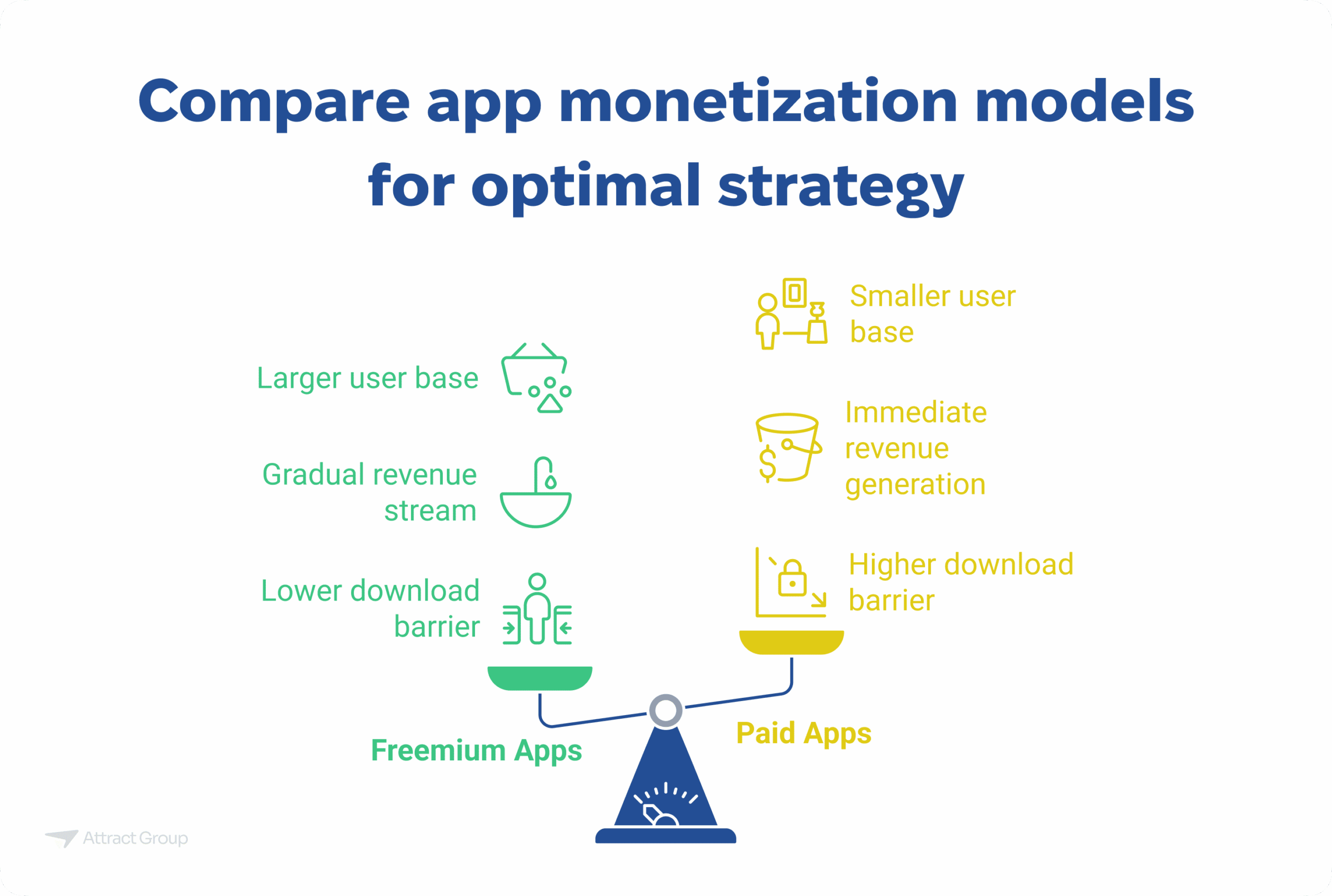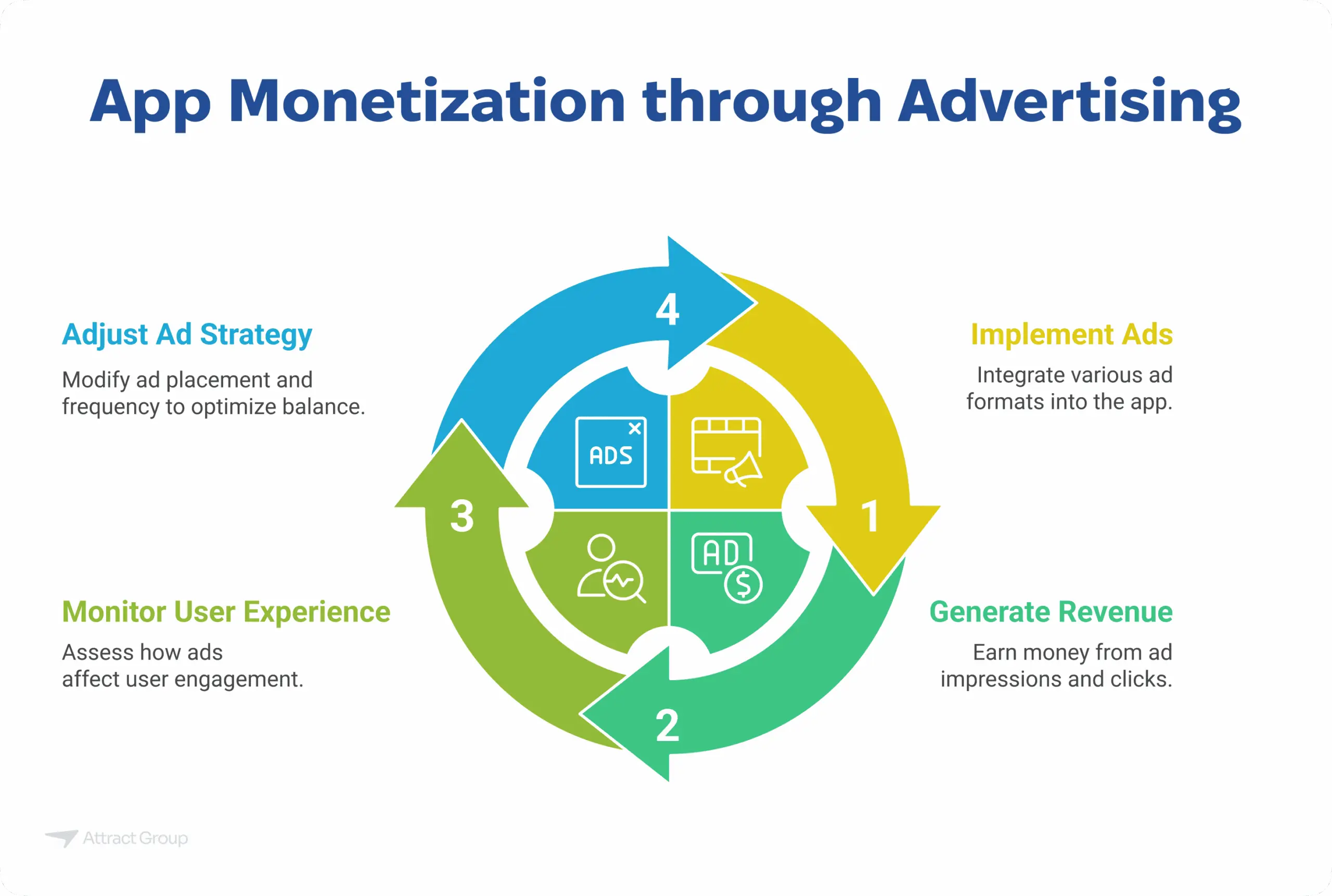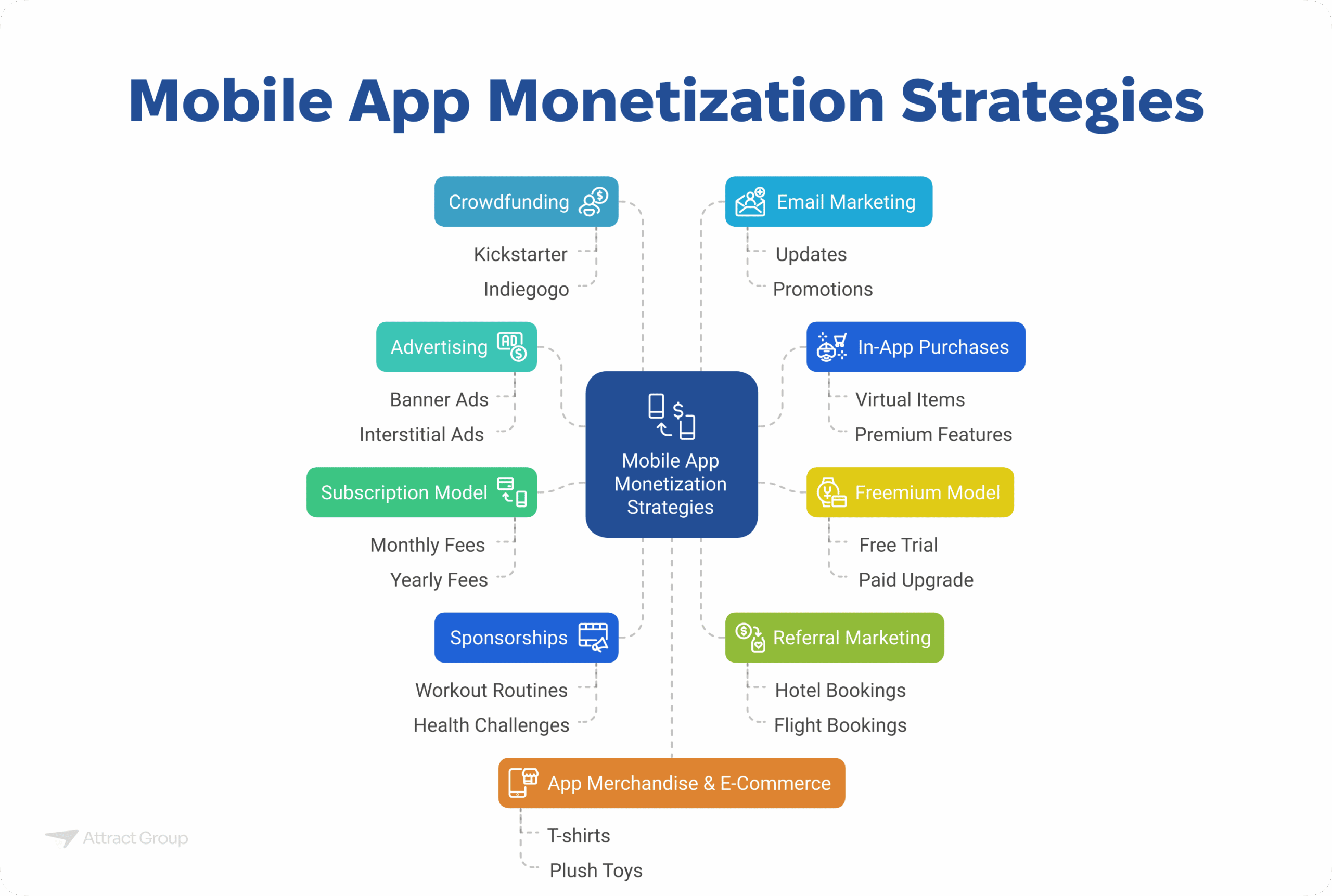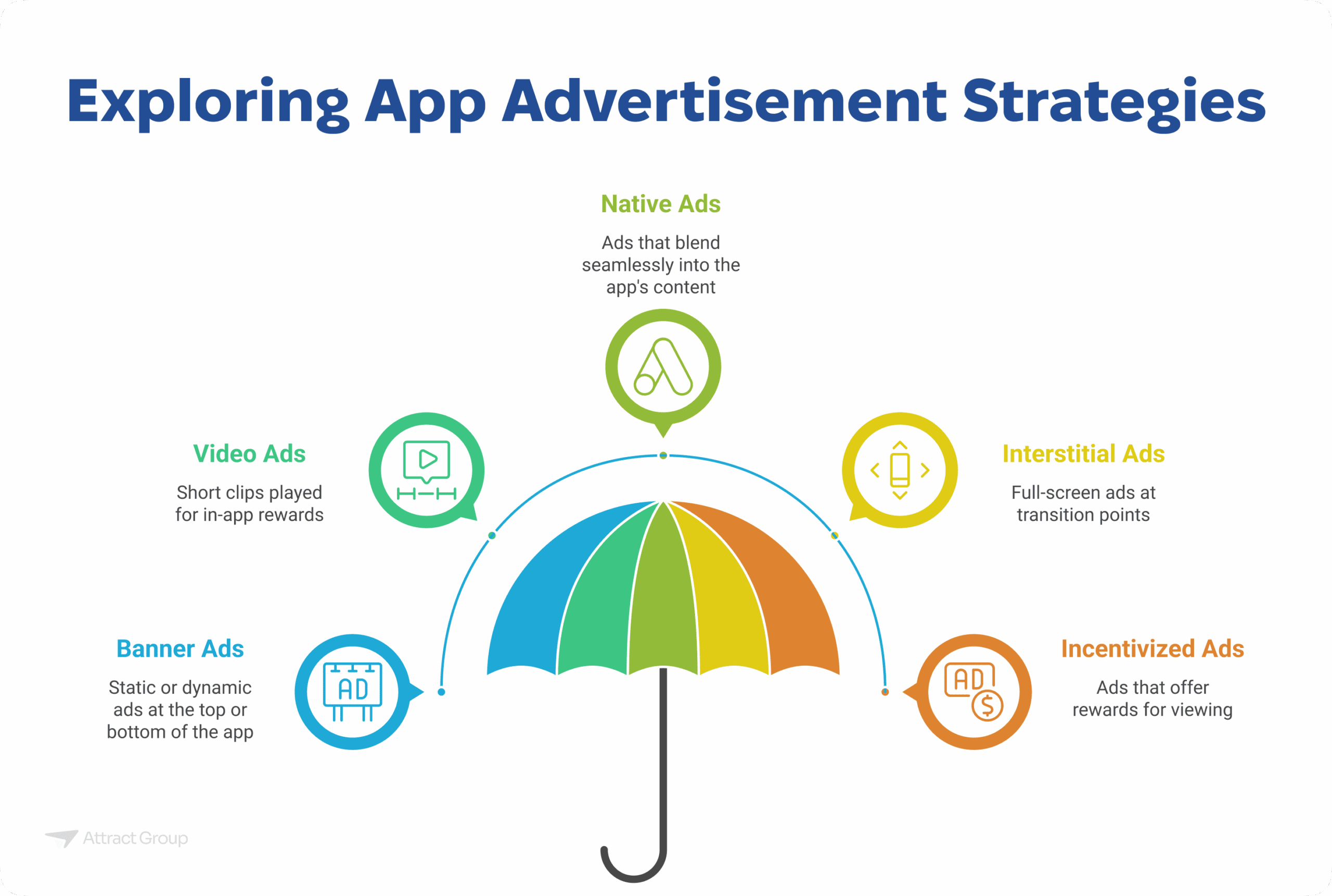How Free Apps Make Money? Become Rich with Free Mobile Apps
 12 October 2024
12 October 2024 Table of contents
Do you wonder how do apps make money if they are free?
The problem with this is that most aspiring app developers struggle to understand the monetization strategies behind these free apps. I was once in the same boat. When I first started developing mobile apps, I couldn’t figure out how these free apps could be so profitable. It took months of researching and experimenting before I cracked the code on various monetization techniques used by top developers. Once I understood these strategies, my free apps began generating significant revenue streams.
In this post, I am going to reveal the top methods that free apps use to make money and how you can implement these strategies to turn your app ideas into a profitable venture.
Freemium Apps vs Paid Apps Market
Understanding the differences between freemium apps and paid apps is crucial for anyone looking to make money from free apps. In the highly competitive landscape of mobile applications, knowing which app monetization strategies to employ can be the difference between a financial hit and a flop.

Freemium Apps: Freemium apps are a popular way to make money. They allow users to download the app for free but offer premium features, additional content, or ad-free experiences as in-app purchases. This model lowers the barrier to entry, encouraging more downloads and creating a larger user base. Once users are engaged, many are willing to pay for enhancements or conveniences.
Paid Apps: On the other hand, paid apps require an upfront payment to download. While this can generate immediate revenue, it often results in fewer downloads compared to a free version. The challenge with paid apps is convincing users that your app provides enough value to justify the cost. This model can work well for highly specialized or niche applications.
| Category | Freemium Apps | Paid Apps |
|---|---|---|
| Definition | Apps that are free to download but offer premium features, additional content, or ad-free experiences through in-app purchases. | Apps that require an upfront payment to download. |
| User Base | Larger user base due to lower entry barrier. | Smaller user base as users must pay upfront. |
| Monetization Strategy | Revenue generated through in-app purchases and ads. | Revenue generated through upfront payments. |
| Advantages | – Encourages more downloads. – Potential for continuous revenue from in-app purchases. – Flexible monetization options. | – Immediate revenue generation. – Works well for niche or highly specialized apps. |
| Challenges | – Requires continuous engagement to encourage purchases. – Users may dislike ads. | – Must convince users of the app’s value upfront. – Fewer downloads compared to free apps. |
| Market Impact | Dominates the app market, accounting for over 90% of all downloads. | Less dominant in the overall app market. |
| App Functionality | Offers a wide array of functionalities and can cater to diverse needs. | Often provides specialized or niche functionalities that justify the upfront cost. |
| Revenue Opportunities | – In-app ads – Video ads – Premium content/features through in-app purchases | One-time purchase revenue. |
| Importance in Global Market | Essential for attracting a broad user base and exploring various monetization techniques. | Limited in market share but crucial for specific market segments requiring high-quality, specialized apps. |
Monetizing an app can turn a simple mobile application into a profitable venture. Below, we’ll explore how do apps make money if they are free.
1. Advertising
One of the most straightforward ways to monetize an app is through advertising. Various formats such as banner ads, interstitial ads, native ads, and video ads allow app users to continue using the app for free while generating revenue for the developer. For example, game apps often use interstitial ads between levels, while non-gaming mobile apps might use banner ads strategically placed within the user interface. Advertising is a proven way to earn money; however, overuse of ads can disrupt user experience, leading to decreased app usage.
2. In-App Purchases
In-app purchases offer another effective method for monetizing mobile apps. This strategy is particularly lucrative for game apps where users can buy virtual items like skins, power-ups, and extra levels. Non-gaming mobile apps also take advantage of this model by offering premium features or content. For instance, a free weather app might offer an ad-free experience, additional weather data, or exclusive forecasting features. By integrating a seamless in-app purchase flow, developers can make money from mobile apps while maintaining a large user base.

3. Freemium Model
The freemium model combines free and premium components, allowing users to download the app for free and optionally pay for enhanced features. This model provides a free trial period that encourages users to explore the app’s basic features before deciding to upgrade to a paid version for additional benefits. A perfect example of this model is Spotify, where users can stream music for free with ads or opt for a premium subscription to enjoy an ad-free experience with additional features. The freemium model is highly effective for apps available in competitive markets, as it lowers the barrier to entry while still offering a way to earn money.
4. Subscription Model
Subscription models are particularly popular among non-gaming mobile apps that offer continuously updated content, such as news apps, fitness apps, or streaming services. Users pay a recurring fee, usually monthly or yearly, for ongoing access to premium features or exclusive content. This model is effective in creating a steady revenue stream and is often combined with a free trial period to attract new users. For instance, The New York Times offers various subscription tiers that provide access to their extensive archive and premium articles, making it an excellent example of how to monetize an app through subscriptions.
5. Sponsorships
Sponsorships offer another lucrative opportunity to monetize mobile apps without ads. In this model, an app partners with a brand or business that pays to have its product or service promoted within the app. This can be particularly effective for apps that boast a large and engaged user base. For example, a fitness app might partner with a sportswear company to sponsor workout routines or health challenges. This approach not only helps in making money from the mobile app but also adds value to app users through relevant and useful content.

6. Referral Marketing
Referral marketing involves promoting another product or service within your app to earn a commission on each sale or sign-up generated. This method is highly scalable and can be integrated seamlessly into various types of apps. For instance, a travel app might recommend booking hotels or flights through a partnered service, earning a commission for each booking made through the referral link. This is an effective way to monetize an app while providing additional value to users.
7. Crowdfunding
Crowdfunding allows app developers to raise funds directly from potential users or investors before the app is fully developed. This method is popular among innovative or niche apps that may not have immediate commercial viability. Platforms like Kickstarter and Indiegogo facilitate this process by allowing developers to present their app ideas and receive financial backing from interested backers. Crowdfunding not only generates initial funding but also creates a community of engaged users who are invested in the app’s success.
8. Email Marketing
Email marketing is a powerful tool for retaining users and generating revenue over time. By collecting email addresses through in-app prompts or signup forms, developers can send targeted emails featuring updates, promotions, and personalized content. For example, news apps like The Washington Post often use email marketing to keep subscribers informed about new articles and exclusive content. This method helps in keeping the user base engaged and drives repeat usage, ultimately aiding in the monetization process.
9. App Merchandise & E-Commerce
Selling app-related merchandise or integrating e-commerce features within the app provides another pathway to monetization. Popular apps like Angry Birds have successfully expanded their brand by selling a wide range of merchandise, from T-shirts to plush toys. Additionally, some apps integrate e-commerce platforms to sell complementary products directly through the app. This model is particularly effective for apps with a strong brand identity and a dedicated user base.
Monetize Your Free App Effectively
Partner with our experts to discover proven strategies that turn your free mobile app into a profitable venture.
Partner with our experts to discover proven strategies that turn your free mobile app into a profitable venture.

App Monetization Strategies: An In-depth Insight
Monetization methods are the backbone of mobile app development. Understanding the various strategies can help you set up effective revenue streams from the start. Whether you are an app developer listed on Google Play or the Apple App Store, these strategies can help you maximize your earnings by leveraging different approaches tailored to user behavior and preferences.
1. Advertising
Mobile ads remain one of the most popular app monetization models. By displaying advertisements like banner ads, native ads, and video ads, you can earn money every time a user interacts with these ads. This model is particularly effective for gaming apps and utility apps that have a large user base but do not want to charge for the initial download.
Types of App Advertisements
1. Banner Ads: Banner ads are static or dynamic ads displayed at the top or bottom of the app. These ads usually do not interrupt the user experience and are easy to implement. An example is the popular game **Flappy Bird**, which generated significant revenue through simple banner ads.
2. Video Ads: Video ads are short clips that play within the app, often as a prerequisite for gaining some form of in-app reward. Apps like VSCO and YouTube use video ads effectively. Google’s “Be together, not the same” campaign is an exemplary case of engaging video ads.
3. Native Ads: Native ads blend seamlessly into the app’s content, appearing as a natural part of the user interface. Airbnb, for instance, partnered with New York Times to deliver native ads that aligned with their brand’s storytelling approach.

4. Interstitial Ad: Interstitial ads are full-screen ads that appear at transition points in an app, such as between levels of a game or during loading screens. Emirates Airlines used these ads effectively in various travel apps.
5. Incentivized Ad: These ads offer users rewards, such as virtual currency or additional features, for watching an ad. RunKeeper, for example, uses incentivized ads to offer discounts or additional features.
2. Referral Marketing
Referral marketing involves promoting another application or product within your app to earn commissions. Be it an Android app or iOS app, referral marketing can be a lucrative way to make money without the need for ads. There are various methods to approach referral marketing:
- Promote Another Application: Highlight other apps within your mobile game or utility app to earn a commission every time a user downloads the recommended app.
- In-App Advertisement: Integrate referral links within your app’s content to promote products or services.
- Advertise Products or Services via In-App Store: Utilize in-app stores to promote third-party products or services, earning commissions on each sale.
Example of Referral Marketing
Amazon effectively uses referral marketing by promoting similar products or apps within its ecosystem. Users who shop through these links contribute to Amazon’s affiliate revenue.
3. In-App Purchase & Freemium Model
The freemium model allows users to download the app for free and offers paid features as upgrades. In-app purchases can be categorized into different types:
- Consumable: One-time use items, such as virtual currency, health packs, or special abilities in games like “Clash of Clans”.
- Non-Consumable: Permanent upgrades or unlockables, such as ad removal or extra levels seen in apps like “MX Player”.
- Subscription: Recurring charges that provide access to premium content or services, used extensively by apps like “Pokemon Go”.
3. Subscription Model
Subscriptions involve recurring payments for ongoing access to app features or content. This model works particularly well for content-rich applications or those offering regular updates and exclusive content.
Newspapers like “The Wall Street Journal” and “New York Times” use subscription models successfully, providing daily or weekly updates and exclusive articles.
4. Sponsorship Model
The sponsorship model involves partnering with brands to provide funding in exchange for exposure within the app. This can be a lucrative way to make money from apps without relying on user payments or ads.
Example of Sponsorship Model
Weather Channel app has collaborated with various brands for sponsorship deals, allowing companies to sponsor weather updates or themed content.
Types of Sponsorship Deals
- Equally Divide Revenue: Share revenue generated from the app.
- Monthly Sponsorship Fee: Fixed monthly payment from the sponsor for featuring their brand or products.
5. Crowdfunding Model
Crowdfunding allows you to raise funds from users or investors before the app is fully developed. This model is particularly effective for innovative or niche apps that may not have immediate commercial viability.
Platforms like “Kickstarter” and apps such as “Hello Earth” use crowdfunding to gather initial capital from interested users wh
6. Email Marketing
Email marketing involves collecting users’ emails to send updates, promotions, and personalized content, driving engagement and retention.
Example of Email Marketing
Publications such as “The New York Times”, “The New Yorker”, and “The Washington Post” use email marketing to engage their audience with newsletters and exclusive content.
Methods of Collecting Emails
Use in-app prompts or offer incentives for email sign-ups, such as free content or special offers.
7. App Merchandise & E-commerce
Some apps sell merchandise or leverage e-commerce to generate revenue. This model is common for apps with a strong brand or cult following.
The “Angry Birds” brand expanded to sell merchandise via the “Amazon Merch” tool, capitalizing on their app’s popularity.
| Monetization Strategy | Description | Examples |
|---|---|---|
| Advertising | Displaying ads like banner, video, native, interstitial, and incentivized ads to generate revenue based on user interaction. | Banner Ads: “Flappy Bird” Video Ads: VSCO, YouTube Native Ads: Airbnb Interstitial Ads: Emirates Airlines Incentivized Ads: RunKeeper |
| Referral Marketing | Promoting another application or product within your app to earn commissions. | – Promote Another App: Earn commission on downloads In-App Advertisement: Integrate referral links Advertise via In-App Store: Amazon |
| In-App Purchase & Freemium Model | Offering the app for free with paid features or upgrades available for purchase. | Consumable: Virtual currency in “Clash of Clans” Non-Consumable: Ad removal in “MX Player” Subscription: “Pokemon Go” |
| Subscription Model | Recurring payments for ongoing access to app features or content. | “The Wall Street Journal”, “New York Times” |
| Sponsorship Model | Partnering with brands for funding in exchange for exposure within the app. | Weather Channel app’s brand sponsorship |
| Crowdfunding Model | Raising funds from users or investors before the app is fully developed, suitable for innovative or niche apps. | Platforms: “Kickstarter” Apps: “Hello Earth” |
| Email Marketing | Collecting users’ emails to send updates, promotions, and personalized content to drive engagement and retention. | “The New York Times”, “The New Yorker”, “The Washington Post” |
| App Merchandise & E-commerce | Selling merchandise or leveraging e-commerce to generate revenue, particularly for apps with a strong brand or following. | “Angry Birds” selling merchandise via “Amazon Merch” |
How Much Money Do Free Apps Make?
In the sprawling landscape of the mobile app market, free apps dominate the majority of app downloads on both the Google Play Store and the Apple App Store. Despite being free to download, these apps can generate significant revenue through various sophisticated mobile app monetization strategies. As market research indicates, nearly 98% of global app revenue comes from free applications, amounting to over $92 billion in 2019 alone and escalating the global app industry revenue to over $365 billion in 2021. This data underscores the immense potential of free app monetization strategies.
Revenue Models
1. Advertisement:
One of the primary revenue models for free apps is advertising. The following details provide insights into how much revenue different types of ads can generate:
- Banner Ads: Although banner ads have a lower engagement rate, they can still generate considerable revenue. For instance, “Flappy Bird” earned approximately $50,000 per day through banner ads at its peak.
- Rewarded Video Ads: These ads are particularly successful in gaming apps. According to a report by Tapjoy, rewarded video ads can generate an eCPM (effective cost per thousand impressions) ranging from $10 to $50, significantly higher than other ad formats.
- Interstitial Ads: These full-screen ads typically have an eCPM between $2 and $4 for standard gaming and utility apps.
- Native Ads: With higher engagement rates, native ads can command an eCPM of $5 to $20, depending on the app’s niche and user engagement.
2. In-App Purchases
In-app purchases play a crucial role in monetizing free apps. This model is particularly profitable, especially for gaming apps:
- Clash of Clans: This game generates approximately $1.5 million per day, largely through in-app purchases such as virtual currency and power-ups.
- Pokemon Go: At its height, this game generated $2 million per day through in-app purchases.
- Non-Game Apps: For instance, **Tinder**, a dating app, uses in-app purchases to offer premium features and reportedly generated $1.4 billion in revenue in 2019.
3. Freemium Model
The freemium model is another prevalent strategy. In this model, users get some free features and some premium features. The premium features are only either available for a limited time or to paid users only. One great example of this model is Spotify.
Spotify, the music streaming service uses a freemium model where users can opt for a free version with ads or pay for an ad-free premium subscription. In 2020, Spotify’s freemium model helped it generate $7.88 billion in revenue, with 45% of users converting to premium.
4. Subscription Services
Subscription services offer continuous access to exclusive content or premium features:
- The New York Times: With a subscription model, it generated $800 million in digital-only revenue in 2020.
- Netflix: Though not an app-exclusive example, serves to illustrate the model’s success, generating over $25 billion from subscriptions in 2020.
5. Referral Marketing and Affiliate Programs
Referral marketing is less about app-specific numbers and more about percentage earnings.
Amazon Associates, Apps promoting products via Amazon can earn between 1% and 10% of the sale price through affiliate marketing. For example, an app generating $100,000 in referred sales could earn between $1,000 and $10,000.
Examples of Top-Grossing Apps
The success of top-grossing apps highlights the potential of various monetization strategies in transforming free applications into lucrative ventures. By understanding and implementing these strategies, including advertising, in-app purchases, and subscriptions, app owners can tap into the vast revenue opportunities the mobile app market offers. Whether developing a non-game app, gaming app, or dating app, these monetization models are crucial for achieving financial success in a competitive and ever-evolving industry. Several high-profile apps exemplify the success of free app monetization:
- TikTok: Despite being free to use, TikTok generated $110 million in September 2020 alone via in-app purchases and advertising, making it one of the top-grossing apps globally.
- Honor of Kings: This game generated over $240 million in revenue in October 2020, relying heavily on in-app purchases.
- YouTube Premium: In addition to ad revenues, YouTube generates substantial income through its premium subscription service. As of Q3 2020, YouTube’s ad revenues alone totaled approximately $5 billion.
Conclusion
In conclusion, creating a profitable free app is no longer a mystery but a calculated science enriched by well-researched monetization strategies. From advertising and in-app purchases to freemium and subscription models, the methods laid out in this article serve as a comprehensive guide to transforming your app ideas into substantial revenue streams. Mobile app development companies often focus on the business of apps, recognizing there are many ways to make money, whether through free and paid models or offering a free trial to attract users.
For aspiring developers who want to develop a free app and succeed in the highly competitive landscape of apps on the Google Play Store and the Apple App Store, understanding how apps generate revenue is crucial. By implementing the best app monetization strategies, such as the freemium model and ads, you can monetize your free apps effectively. The number of free apps making substantial profits is a testament to the viability of these approaches.
Working with experienced professionals can help you define the best app monetization model tailored to your specific needs. Attract Group, a leading mobile app development company, provides expert guidance and services to help you navigate the business of apps successfully. We offer tailor-made solutions for free apps to make money, ensuring you leverage the best app monetization methods available.
Take the next step towards turning your app ideas into a profitable reality. Contact Attract Group today to learn how we can help you develop a free app and implement the best strategies to monetize your free and paid apps on the app store.
FAQs
How significant is user retention for the success of my free app?
User retention is paramount to the success of your free app. High retention rates typically lead to more consistent revenue streams, especially through in-app purchases and advertisements. When users stay engaged over time, they are more likely to encounter and engage with monetization elements such as ads or premium content. For apps on Google Play, retaining users can also lead to better reviews and ratings, which further attract new users. Implementing features that enhance the user experience, such as offering a free trial period for premium features, can significantly boost retention rates.
What are some effective methods to market my free app on Google Play?
Marketing your free app effectively includes a combination of ASO (App Store Optimization), social media promotion, influencer partnerships, and content marketing. Start by optimizing your app’s metadata—title, description, and keywords—to improve its visibility among other apps in Google Play. Next, engage your audience on social media platforms by sharing regular updates and user testimonials. Collaborating with influencers who resonate with your target audience can also drive substantial downloads. Lastly, employing content marketing strategies like blog posts, videos, and tutorials can attract and educate potential users about the unique features and benefits of your app.
How can I ensure that my in-app purchases are appealing enough to drive revenue?
To maximize revenue from in-app purchases, focus on creating valuable and enticing offerings that enhance the user experience. This can include virtual goods, additional content, or premium features. Ensure that these offerings are reasonably priced and provide a clear benefit to the user. Highlight the advantages of in-app purchases through in-app prompts, special offers, and limited-time deals. Offering a free trial period for premium services can also be an effective strategy to convert free users into paying customers. By demonstrating the immediate value, users are more likely to make money through in-app purchases.
What is the role of push notifications in app monetization?
Push notifications play a crucial role in app monetization by re-engaging users and driving them back to the app. They can be strategically used to promote in-app purchases, new features, or limited-time offers, thereby boosting engagement and revenue. However, it’s essential to strike a balance; too many push notifications can lead to user annoyance and app uninstalls. Personalizing push notifications based on user behavior and preferences can increase their effectiveness, making them a valuable part of your monetization model for your free app.
Are there specific monetization models that work better for different types of apps?
Yes, different app categories often benefit from specific monetization models. For instance, gaming apps typically make money through in-app purchases of virtual goods and incentivized video ads. Subscription models are more effective for content-rich or service-oriented apps, such as news, fitness, and streaming applications. For utility or productivity apps, offering premium features on a freemium basis is often successful. It’s crucial to analyze your app’s core functionality and user base to determine the most effective monetization model for your free app. Customizing your strategy based on these insights will likely yield better financial results and user satisfaction.










